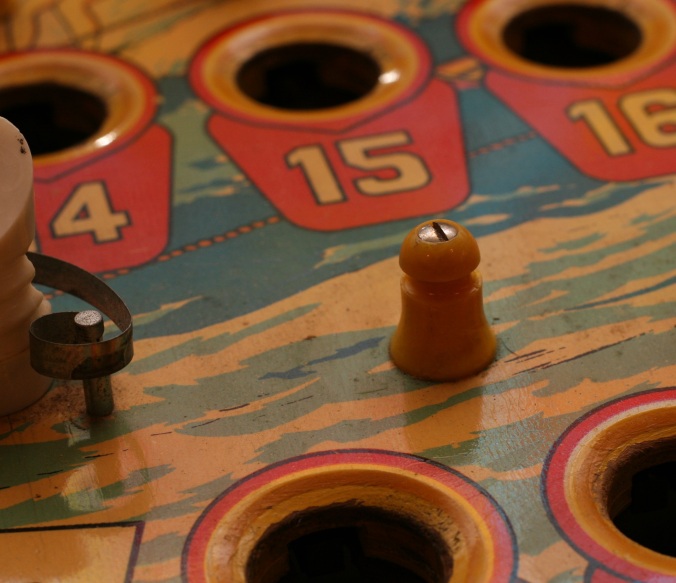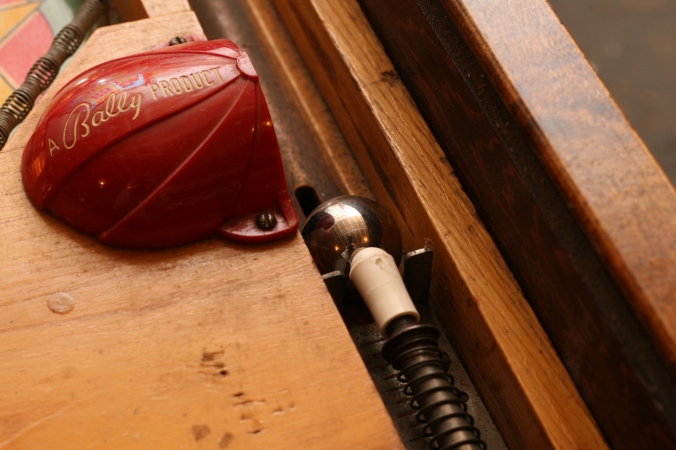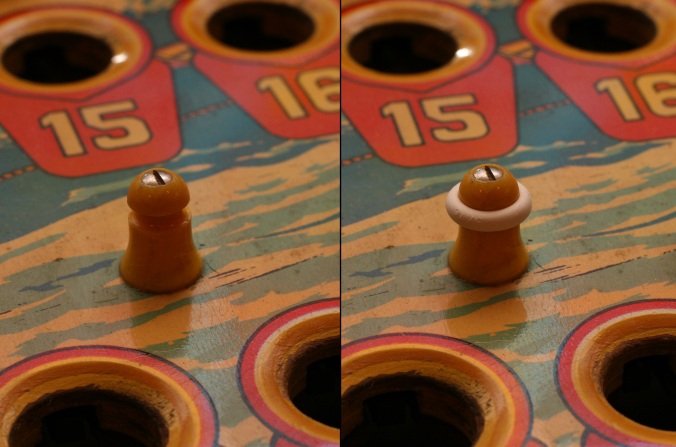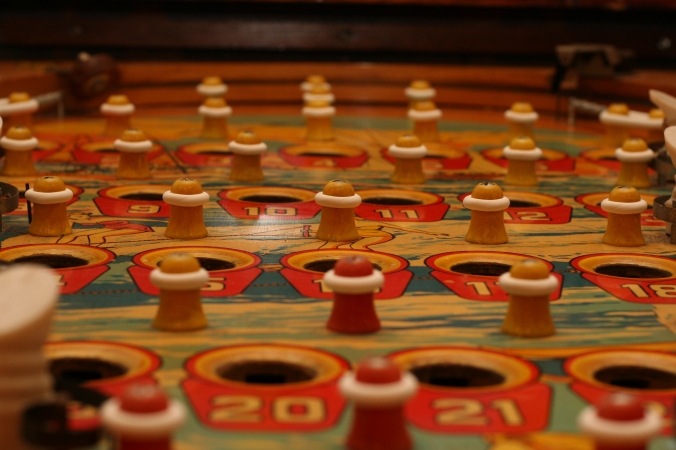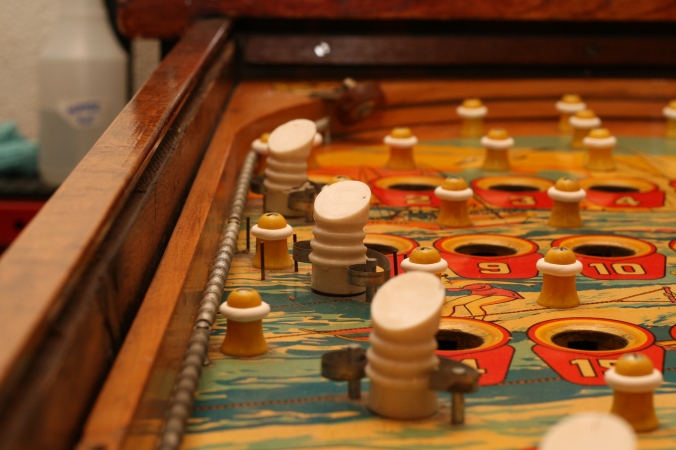Alright, enough talk about business for a bit — let’s get down to business and talk about pinball. In particular, let’s talk about our first refurbishment: a 1953 Bally Beach Club. Here she is, exactly as we got her:
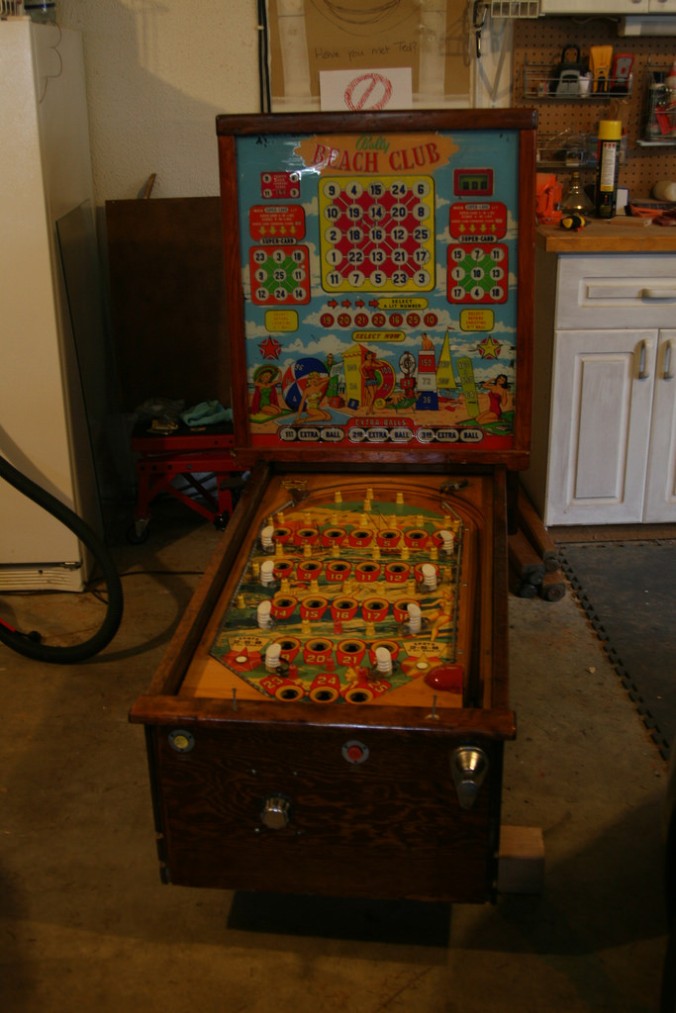
So the first thing you’re probably noticing is that this looks nothing like any pinball table you’ve seen at an arcade. There seem to be an awful lot of holes on the playfield, and where are the flippers?! Well, the Bally Beach Club is what’s known as a “bingo” pinball table. Back in the 50’s, these were actually a fairly common type of table. Back then, pinballs were often used as a gambling device, and the core of the gameplay was centered around chance. The entire flipper concept didn’t really get popular until the law cracked down on games of chance, at which point flippers came into play to turn it into a game of “skill”.
The game play on the bingo pinballs is actually pretty straight forward. The user deposits a coin, or several, and shoots balls onto the play field. As the balls land in individual holes, the corresponding number lights up on the glass backboard. If the user gets three or more lit items in a row, they score some credits. They’re also allowed to shout bingo, but that part isn’t required. Now, some of the tables (including this one) also let you deposit additional credits at the start of gameplay to unlock additional features, like rollover targets or select-a-spot features. But we’ll get into all that in more detail in a later post.
Now, this particular table has had a bit of a rough life, so it should be a nice challenge to fix ‘er up. This table popped up on Craigslist a few weeks back, so we took a drive out to a swap meet in rural Washington to have looksee. The seller had picked the table up from an estate sale as-is, and didn’t know much else about it. The table turned on, but he hadn’t been able to get it to light up, and there weren’t even any balls in it to run the game.
Upon thorough inspection, it turns out this table is awfully beat up. For starters, it was dirty. Really dirty, inside and out:
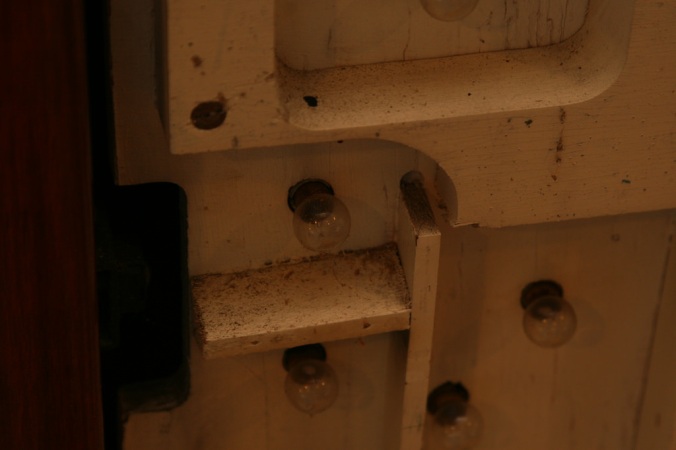
But a little dirt isn’t so hard to clean off. What else is wrong? Well, the cabinet isn’t original — it turns out someone rebuilt the base cabinet somewhere along the line. At first we thought maybe someone has just sanded off the original paint job, but the wood itself isn’t original to the time. The back box is the original wood, sanded down and lacquered, but the cabinet it just some plywood someone picked up at the hardware store. The rebuilt cabinet alone is enough to demote this pinball to a parts table to some folks, but we’re happy to press on.
As part of the cabinet rebuild, it also appears that a prior owner took out the coin door. Looking at the front of the table, there’s simply nowhere to access coins, and the top bar is missing the slot to insert them:
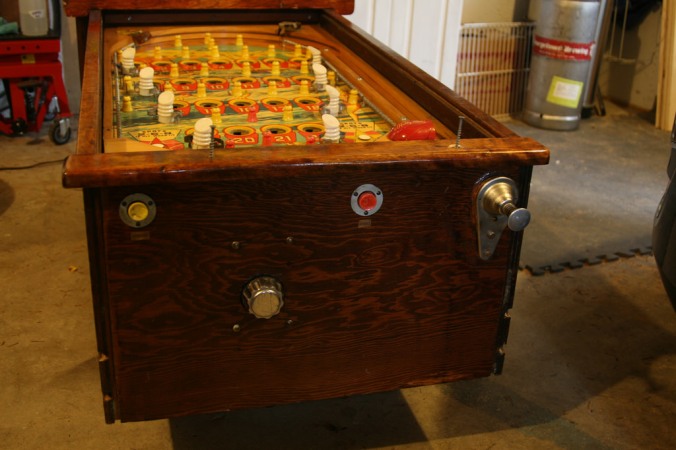
Well, as mentioned earlier, adding credits is pretty central to gameplay on a bingo pinball, so that seems concerning. It also means that we could safely infer someone along the way did a bit of rewiring along the way to make it free play. Well, now we can’t just stare at the schematic to debug problems — we also have to figure out the extent of the intentional rewiring that occurred.
Further inspection inside the cabinet reveals that the door rewiring might just be the least of our problems. In addition to a few other hanging wires and unexpected modification we found something a whole lot scarier: fire damage. Yep, this table sure has had a rough go of things.
Take a look at the replay registers, and look at all the soot on the coil second from the bottom:
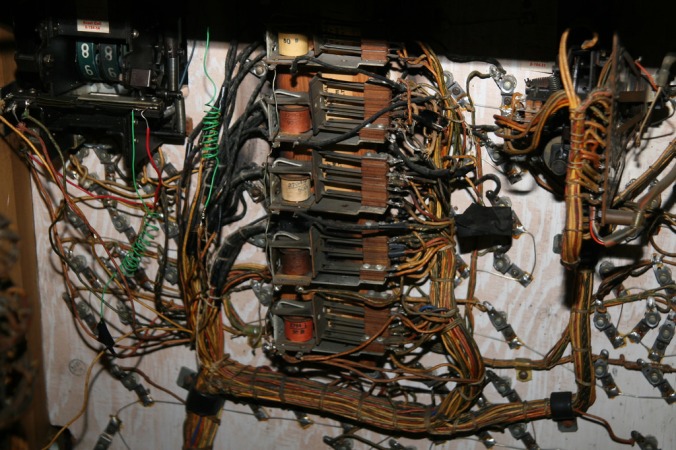
That’s fire damage. And, peering behind that bank of registers, there’s a whole lot more fire damage. Well, drats, that’s concerning. But, hey, some people just love a challenge.
So, despite all the giant red flags that this pinball isn’t worth the trouble, we bought it. Now it’s sitting in the garage awaiting a proper restoration. Here is some of the work we need to get through:
- Clean off decades of dirt and grime. Inside and out, there’s a whole lot of cleaning to be done.
- Basic maintenance. Add a set of balls, add rubber rings to the posts, replace any dead light bulbs
- Get it fired up, and wrap our heads around what modifications were made to make it free play
- Refinish the legs and get them back on (seriously, they’re in oddly rough shape)
- Cosmetic essentials, like sealing the back glass and refreshing the playfields
- Electrical essentials, like cleaning gummed up steppers and contact plates
- Rewiring and adjusting old modifications to ensure proper game play
Over the next few weeks, we’ll take you through that journey, and along the way we’ll weave in a few posts about the odd history of gambling, bingo and pinball tables.




